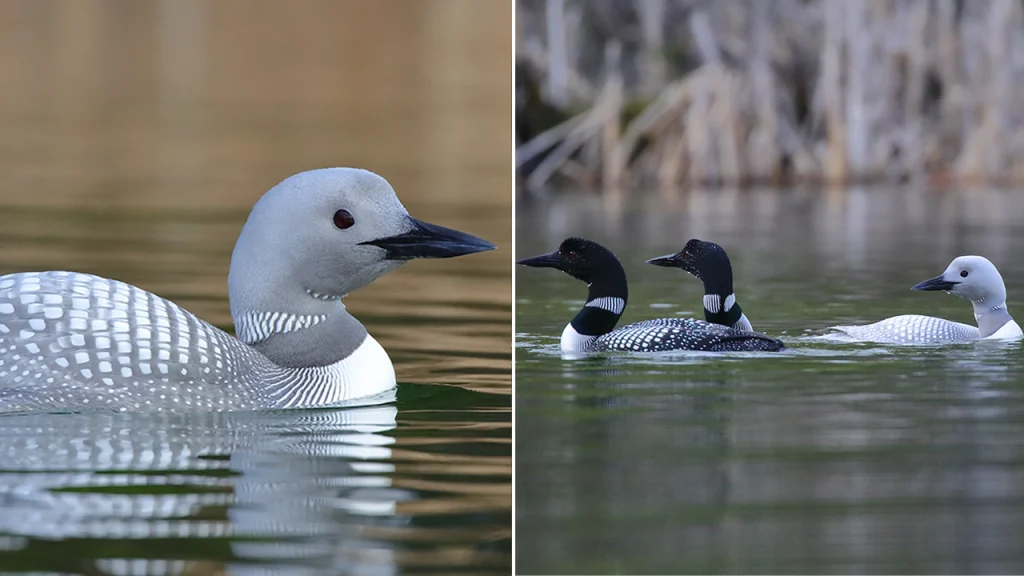Photographer Chris Whitty recently captured a rare image of a white loon during the bird’s molting period. Adult loons molt at the end of the breeding season, transitioning from their black-and-white plumage to their gray-and-white winter plumage. It is uncommon for a loon to be entirely white, making Whitty’s find quite unique. The photographer, who describes himself as an amateur and hobbyist, encountered the bird four years ago and initially thought it was a white-and-gray loon. Loons are excellent swimmers due to the placement of their legs far back on their body, with heavy bones that make them less buoyant, allowing them to dive easily.
Whitty enjoys kayaking with his camera on lakes in British Columbia during the spring and summer. He encounters a variety of wildlife, including loons, herons, turtles, and eagles. After years of not spotting the white loon, Whitty unexpectedly came across it again one spring day while driving to the shoreline of a lake. He quickly snapped photos from the shore before jumping into his kayak to get closer shots. The loon was unbothered by his presence, allowing Whitty to take many pictures before it flew off with other loons. His determination to find the bird paid off when he spotted it again a week later in the same location.
Despite spending nine days straight searching for the white loon, Whitty hasn’t seen it since. He speculates that his encounters may have been stopovers for the bird as it makes its way to its nesting grounds. The loon’s large, webbed feet help it steer better underwater, contributing to its exceptional swimming abilities. The state bird of Minnesota, the loon is known for its distinctive call and elegant appearance. Whitty’s dedication to capturing images of the rare white loon showcases his passion for wildlife photography and his willingness to explore nature in search of unique subjects.
The Loon Preservation Committee confirms that adult loons undergo molting at the end of the breeding season, a process that results in a change from black-and-white to gray-and-white plumage. White loons are not common, making Whitty’s discovery particularly special. Loons are known for their excellent swimming skills, thanks to their unique bone structure and the placement of their legs on their bodies. They are able to dive easily due to their heavy bones, which make them less buoyant in the water. Whitty’s encounter with the white loon highlights the beauty and diversity of wildlife in the Canadian wilderness.
Whitty’s experience of finding and photographing the white loon illustrates the joys and challenges of wildlife photography. His dedication to tracking the bird over multiple days showcases his commitment to capturing unique moments in nature. As an amateur photographer, Whitty’s passion for capturing wildlife in its natural habitat shines through in his images. The rarity of the white loon and the story of its unexpected appearances further add to the intrigue of Whitty’s photography. Through his encounters with this elusive bird, Whitty has created a visual record of a remarkable and seldom-seen creature in the wild.


